Inside Out represents a glorious return to form for Pixar.
After several years of sequels and middling films, Inside Out feels like a breath of fresh air. Films like Cars 2 and Monsters University were very much safe bets for the company, a way to leverage return from existing (and well-loved) properties. Inside Out is something altogether stranger and more high-concept. It feels like the studio is getting back in touch with its original aesthetic. It is a concept that initially seems quite complex and esoteric, but quickly reveals itself to be a simple emotional fairytale.
Wall-E might have been a half-silent science-fiction film, but it was also a very effective love story. Up might have been a wacky adventure about a flying house, but it was also an insightful meditation on grief and loss. Finding Nemo was populated with colourful fish, but it was also about the experience of watching a child venture into the world. Pixar established and developed a reputation as a studio that could produce films that were accessible and exciting to children, but also packed a more weighty and substantial punch for the parents in the audience.
Inside Out is perhaps the most high of Pixar’s concepts, but it ultimately boils down a very organic and instinctive story meditating on the studio’s core themes of emotional development and family metaphors.
The world of Inside Out has a lot of important ideas. It throws out a lot of “rules” and “labels” in the opening fifteen minutes, establishing a world that feels more like a science-fiction film than the establishing sequences in Wall-E. We are introduced to the five emotional voices that exist inside each person. They are represented through a series an anthropomorphic entities. Joy practically glows yellow; sadness is blue and lethargic; disgust is green and disaffected; fear is purple and gangly; anger is short and square.
Concepts come quick and fast. Memories are stored in marbles that can be played back for the audience or projected into consciousness at a time of need. Those memories are coloured to match a particular emotion – yellow ffor joy, blue for sadness. Some are filed away in long-term memory, while others are stored as “core” memories. Those memories define personality by establishing “islands” devoted to concepts like “family” or “friendship.” These are the core parts of an individual’s personalities, along with other geographical oddities like “imaginationland.”
It feels like a lot to take in, but Inside Out is beautifully designed. The script is efficient and clean, and the character and animation design is pitch perfect. While there is an introductory narration that explains these concepts, a lot of the core ideas are best articulated through examples from the film itself. The image of the day’s memories rolling away like a game of labyrinth communicates everything the audience needs to know about how that works; similarly, the fact that Sadness changes the context of a memory marble by touching it is also informative.
There’s an art to conveying this information, and the Pixar team have mastered it. Inside Out is packed full of nice visual metaphors even beyond those explicitly spelt out like “train of thought” or “abstract concepts.” At one point, the story takes the audience outside of the head of its central character to give a sense of the internal lives of other (more mature) characters. The positioning of the five emotional entities and the character designs become a very insightful (and strangely heartbreaking) piece of character development for two supporting characters.
All of this is in service of what is a familiar metaphorical journey for the studio. Pixar is fascinated with childhood, in its many forms. Even Up is ultimately about an old man living out his childhood fantasy and his connection to a young boy in need of a father figure. In a rather bold creative decision, Inside Out is mostly told inside the head of an eleven-year-old girl, and plays out as a coming of age story that plays out as an unlikely buddy comedy trip through a young girl’s psyche.
Although the movie’s plot follows Joy and Sadness as they find themselves ejected from the young girl’s emotional control room, it is really an exploration of deeper issues. The trauma leads to this impromptu exile is decidedly domestic; a move from Minnesota to California that puts incredible strain on a family unit. Witnessing the story from the perspective of the young girl, the audience finds themselves glimpsing all sorts of adult fears. We overhear the father worrying about the investors at his company, while the mother tries to put on a happy face.
These are decidedly less fantastical constructs than those playing out inside our protagonist’s head, but they help to ground the story in emotional reality. It is tempting to argue that the film rewards an adult perspective, but that is perhaps unfair to the younger viewers in the audience; children are more emotionally sensitive than their parents often allow, and it seems quite likely that younger audience members will be able to grasp the core ideas of the film even beyond the magical interior life of our central character.
One of the most consistently fascinating aspects about Pixar’s output is the nuance that they afford traditional family fare. Generally speaking, the morals of family films tend to be quite sterile and familiar. Family is great; friends are important; trust is something that should be cherished. Pixar hits on a number of those themes, but they typically add a little extra sophistication and maturity. While Cars 2 is the perfect example of a misfiring moral, films like Up and Finding Nemo tackle sensitive subjects in a clever and honest manner.
Inside Out is a meditation on the end of childhood, acknowledging that a person’s psychology can and does change as they grow. It is tough and traumatic, but is natural. At the climax of the story, Inside Out even falls back on the same emotional metaphor that powered the climax of Up; the sense that sometimes you need to let go of something that is holding you back, even if you absolutely love that thing. It is a very sweet and very sad scene, but one that works very well because it acknowledges its own necessity.
What is most interesting about Inside Out is the way that the film suggests that feeling bad is not the same as being bad. It would be easy to turn Sadness into the villain of the piece, or a quirky supporting character who has to learn an important lesson about not being such a spoil sport all the time; it would be easy to make Joy the hero of the piece, and insist that everybody should aspire to feel upbeat every moment of the day. Of course, reality does not work like that; there is something heartwarming in the way that Inside Out concedes this fact.
The film is narrated by Joy and told from her perspective, so it initially appears like Sadness is going to be an antagonistic character. Joy’s opening narration explains that she understands every single detail of how the mind works, but has absolutely no grasp on the role that Sadness is supposed to play. Over the course of the film, Joy and Sadness both grow and evolve as characters, coming to understand that they can exist in harmony as much as in opposition.
Inside Out is a beautiful piece of work.
Filed under: Non-Review Reviews | Tagged: disney, film, inside out, joy, Movie, non-review review, pixar, review, sadness |















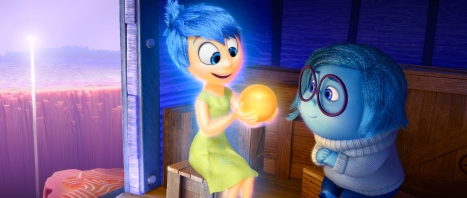
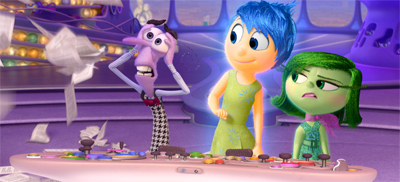
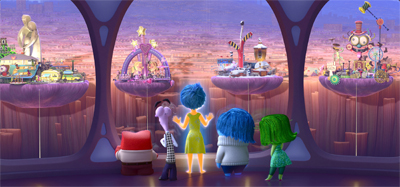

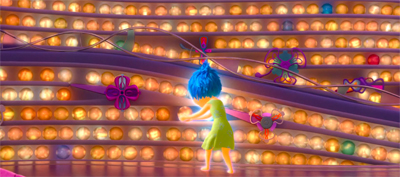
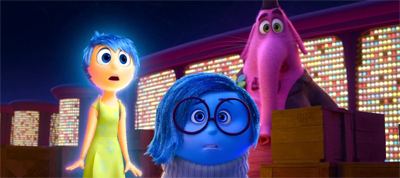






Inside Out was a great movie. It was emotional, funny, and smart. The animation was well-done, the characters were likable and memorable, and the story had something for adults and children. My only issue with the movie was that it felt so short.
Thanks Alena. It is a great film.